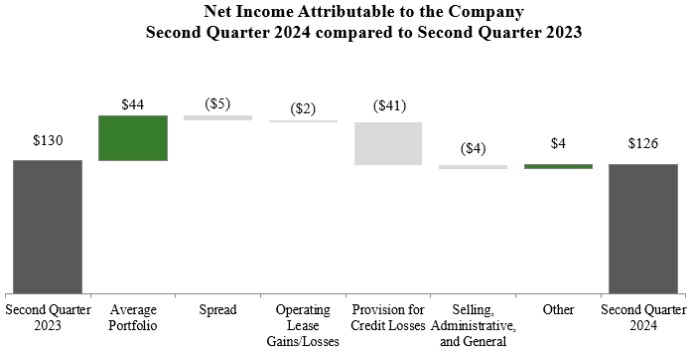Item 2. MANAGEMENT’S DISCUSSION AND ANALYSIS OF FINANCIAL CONDITION AND RESULTS OF OPERATIONS
RESULTS OF OPERATIONS
All amounts are presented in millions of dollars unless otherwise specified.
OVERVIEW
Organization
We provide financial solutions that enable John Deere customers and dealers to advance their lives and livelihoods. Through our offering of retail notes, leases, and revolving charge accounts, customers are able to finance new and used John Deere equipment, as well as parts, services, and other input costs needed to run their operations. We also provide wholesale financing to John Deere dealers.
Smart Industrial Operating Model and Leap Ambitions
John Deere announced the Smart Industrial Operating Model in 2020. This operating model is based on three focus areas:
(a) | Production systems: A strategic alignment of products and solutions around John Deere customers’ operations. |
(b) | Technology stack: Investments in technology, as well as research and development, that deliver intelligent solutions to John Deere customers through digital capabilities, automation, autonomy, and alternative power technologies. |
(c) | Lifecycle solutions: The integration of John Deere’s aftermarket and support capabilities to more effectively manage customer equipment, service, and technology needs across the full lifetime of a John Deere product. |
John Deere’s Leap Ambitions were launched in 2022. These ambitions are designed to boost economic value and sustainability for John Deere’s customers. The ambitions align across the production systems of John Deere customers, seeking to optimize their operations to deliver better outcomes with fewer resources. As an enabling business, we are fully integrated with John Deere’s Smart Industrial Operating Model and are focused on providing financial solutions to help John Deere achieve its Leap Ambitions.
TRENDS AND ECONOMIC CONDITIONS
Our volume of Receivables and Leases is largely dependent upon the level of retail sales and leases of John Deere products. The level of John Deere retail sales and leases is responsive to a variety of economic, financial, climatic, legislative, and other factors that influence supply and demand for its products.
Industry Sales Outlook for Fiscal Year 2024
Agriculture and Turf

Construction and Forestry

John Deere Trends
Customers seek to improve profitability, productivity, and sustainability through technology. Integration of technology into equipment is a persistent market trend. John Deere’s Smart Industrial Operating Model and Leap Ambitions are intended to capitalize on this market trend. The technologies that are the focus of John Deere’s operating model are incorporated into products within each of John Deere’s operating segments. We expect this trend to persist for the foreseeable future.
22

